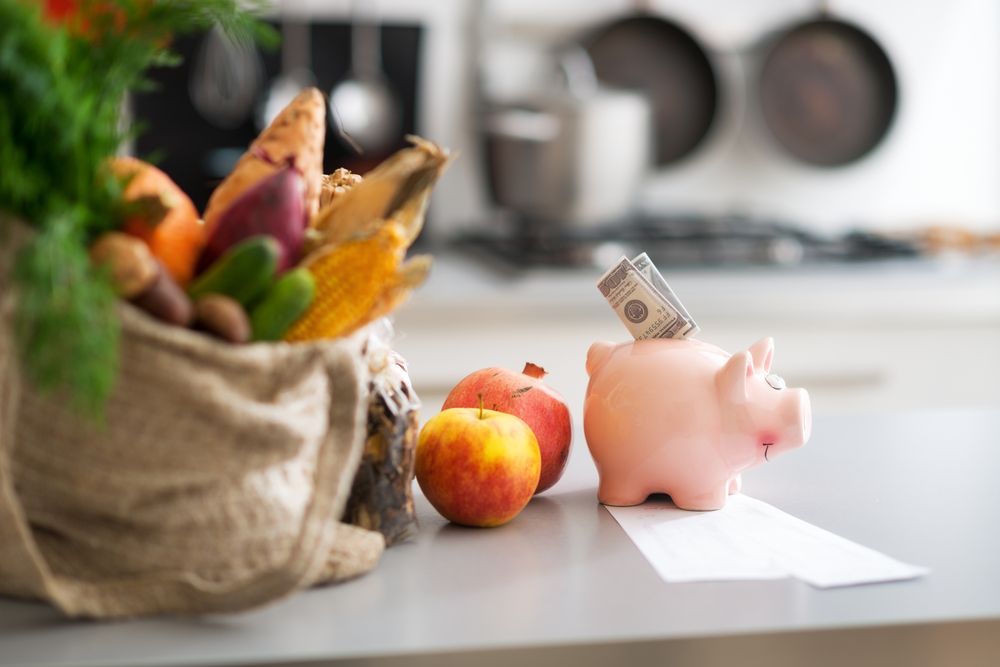
Welcome to the world of savvy shopping and healthy eating! In today’s bustling lifestyle, it’s easy to fall into the trap of convenient but unhealthy eating habits, especially when you’re on a tight budget. However, contrary to popular belief, it’s entirely possible to nourish your body with delicious and nutritious meals without breaking the bank. In this article, we’ll explore practical tips and tricks to help you make smart food choices that are both healthful and economical. So, get ready to embark on a journey to a healthier you, without the added financial stress.
Plan Your Meals
One of the most effective ways to eat healthy on a budget is to plan your meals in advance. Meal planning is a powerful tool that helps you avoid impulse buys and makes grocery shopping more purposeful. Start by taking inventory of what you already have in your pantry and refrigerator. Then, create a weekly menu based on these items, filling in the gaps with a grocery list of necessary additions.
When planning meals, consider recipes that use overlapping ingredients to minimize waste and maximize your budget. For example, a rotisserie chicken can be used for dinner one night, then repurposed into a chicken salad for lunch the next day. Planning also allows you to take advantage of sales and seasonal produce, which are often more affordable and at their peak flavor and nutritional value.
Remember to be realistic about your cooking schedule. If you know you’ll have a busy week, plan for quicker, simpler meals or batch-cook on a less busy day. This way, you’re less tempted to opt for expensive takeout when time is tight.
Buy Whole Foods
Whole foods are often less expensive and more nutritious than their processed counterparts. Fruits, vegetables, whole grains, legumes, nuts, and seeds are packed with essential nutrients that are key to a healthy diet. Buying these items in their whole form not only saves you money but also allows you to control portion sizes and avoid the added sugars, fats, and preservatives found in processed foods.
Purchasing fruits and vegetables that are in season can be more cost-effective and provide better taste and nutrition. For grains and legumes, buying in bulk can lead to significant savings. Stores with bulk bins allow you to purchase exactly the amount you need, which reduces waste and ensures freshness.
When buying meat, consider less expensive cuts like chicken thighs instead of breasts or opt for lean ground meats. These options can be just as nutritious and flavorful when prepared correctly. Additionally, incorporating more plant-based proteins, such as beans and lentils, into your diet can be a cheaper and heart-healthy alternative to meat.
Shop Smart
Smart shopping is key to eating healthy on a budget. Always go to the grocery store with a list to avoid unnecessary purchases, and stick to the perimeter of the store where fresh produce, dairy, and meats are typically located. The inner aisles are often filled with more processed and expensive items.
Take advantage of sales, coupons, and loyalty programs at your local grocery store. Many stores offer discounts on items that may be close to their sell-by date – perfect for immediate consumption or freezing for later use. Additionally, consider store-brand products, which are often less expensive and comparable in quality to name brands.
Don’t overlook the value of local farmers’ markets, where you can find fresh produce at competitive prices while supporting local agriculture. Also, consider starting a small garden – herbs like basil, cilantro, and parsley are easy to grow, even in small spaces, and can save you money over time.
Cook at Home
Cooking at home is one of the most straightforward strategies for eating healthy on a budget. By preparing your own meals, you have full control over the ingredients, allowing you to make healthier choices and tailor meals to your dietary needs.
Invest time in learning to cook. There are countless free resources online, including cooking tutorials and recipes for every skill level. Start with simple, versatile dishes that can be adapted based on the ingredients you have on hand.
Batch cooking is another cost-effective approach. Prepare large portions of meals like soups, stews, or casseroles, and freeze them in individual servings. These homemade “ready meals” are perfect for days when you’re short on time and can prevent the temptation of ordering takeout.
Additionally, get creative with leftovers. Many dishes can be repurposed into new, exciting meals, reducing food waste and stretching your food budget even further.
Embrace Simplicity
Lastly, remember that eating healthy doesn’t require exotic or expensive ingredients. Simple meals can be just as nutritious and satisfying. Focus on the quality of your ingredients rather than the quantity. A dish with a few well-chosen components can be both delicious and healthy.
Keep your pantry stocked with staples like rice, pasta, canned tomatoes, and spices. These items have a long shelf life and can serve as the foundation for countless meals. Fresh produce can be supplemented with frozen vegetables, which are often less expensive and just as nutritious as their fresh counterparts.
Don’t underestimate the power of herbs and spices. They not only add flavor without additional calories but also come with their own health benefits. With a bit of creativity and some basic culinary techniques, you can turn even the most mundane ingredients into a feast for the senses.
Eating healthy on a budget is entirely achievable with a little planning, smart shopping, and cooking at home. By embracing whole foods, taking advantage of sales and seasonal products, and keeping meals simple, you can enjoy a diet that is both nutritious and cost-effective. Remember, healthy eating is not about perfection or expensive superfoods; it’s about making better choices consistently and finding balance within your budget. Now, with these tips in hand, go forth and savor the journey to a healthier, happier you.
